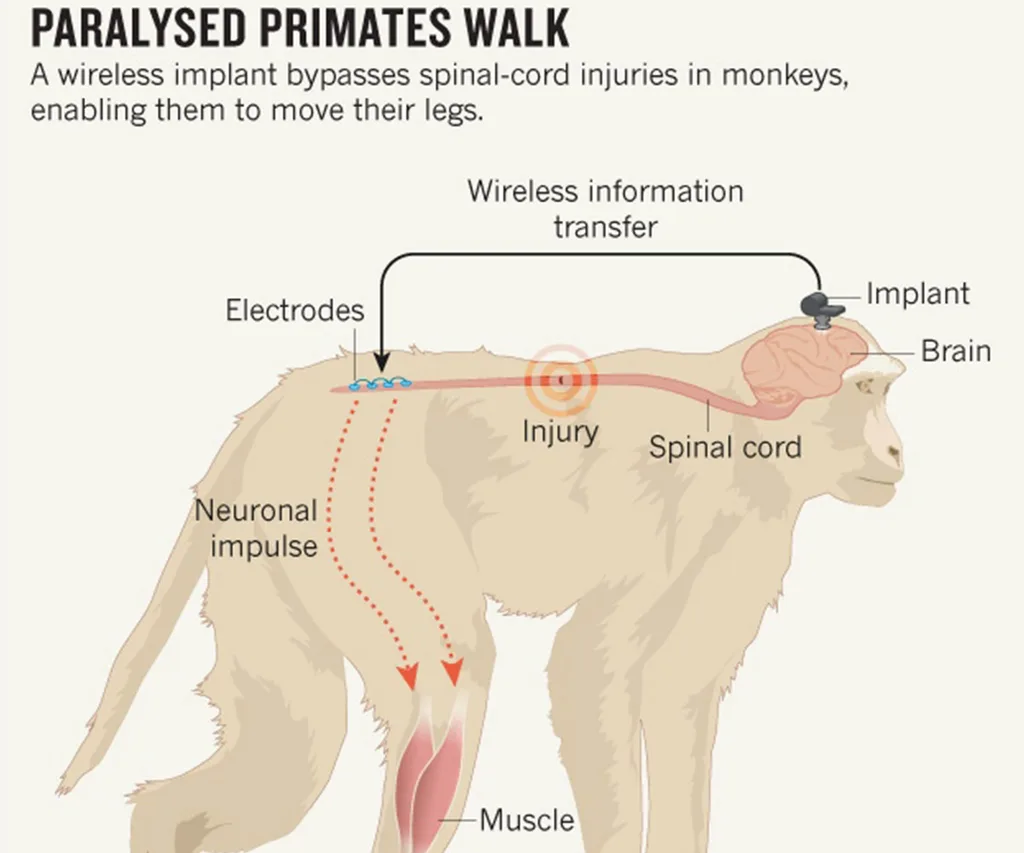A revolutionary new implant duo could mean paralysed patients may soon have the ability to walk again.
The miraculous findings, published in the Journal of Nature, came about after a team of Swiss scientists trialled a brain and spinal implant in primates that uses wireless signals to bypass broken nerves in the spinal cord, which when activated has the ability to reanimate the limbs immediately.
“The primates were able to walk immediately once the brain-spine interface was activated. No physiotherapy or training was necessary,” said neuroscientist Dr Erwan Bezard of Bordeaux University, who oversaw the experiment take place.
Two macaque monkeys, each paralysed to different severities in the right leg, were used for the study. When the device was first activated, both animals began walking unassisted on a treadmill.
“With the system turned on, the animals in our study had nearly normal locomotion,” said Dr David Borton, assistant professor of engineering at Brown and one of the study’s co-lead authors.
While the monkey with more severe spinal damage took two weeks to walk autonomously compared to the first monkey who only took six days, both regained full mobility within just three months.
WATCH: The study’s findings in the video player below. Article continues…
While much more research and testing needs to take place, as primates show vast similarities to humans, the researchers agree that their breakthrough may help humans not only to walk again, but to even encourage the regrowth of damaged nerve circuits.
“There’s an adage in neuroscience that circuits that fire together wire together,” says Dr Borton. “The idea here is that by engaging the brain and the spinal cord together, we may be able to enhance the growth of circuits during rehabilitation. That’s one of the major goals of this work and a goal of this field in general.”
A feasibility study is said to already be underway at the Lausanne University Hospital in Switzerland to test the therapeutic effects of the spine part of the interface in patients with spinal cord injuries.
Jocelyne Bloch, a neurosurgeon at the Lausanne University Hospital who surgically placed the brain and spinal cord implants in the primates says: “For the first time, I can imagine a completely paralysed patient able to move their legs through this brain-spine interface.”
The new technology may be available for the rehabilitation of humans in the next five to ten years.

Via: Nature



